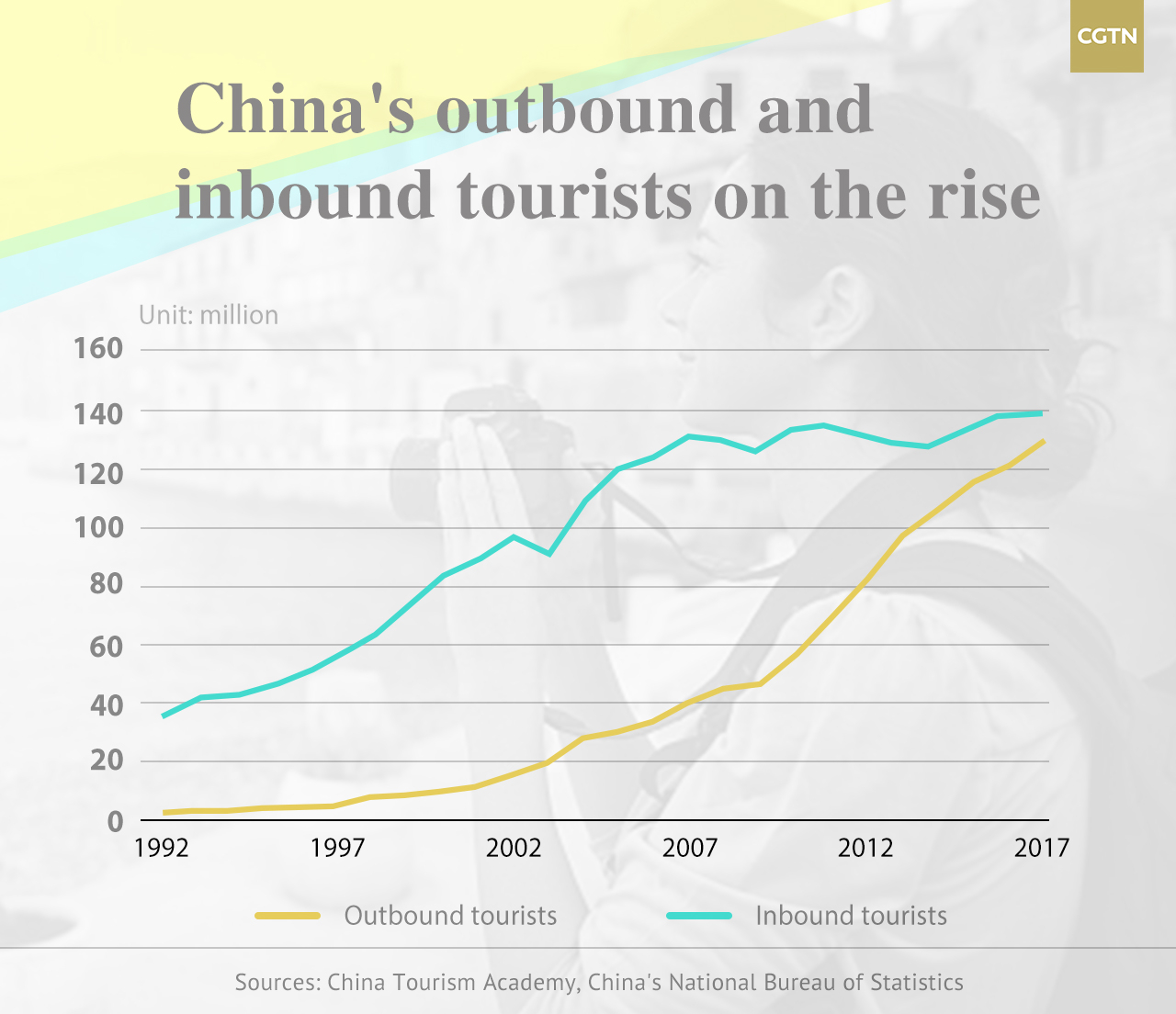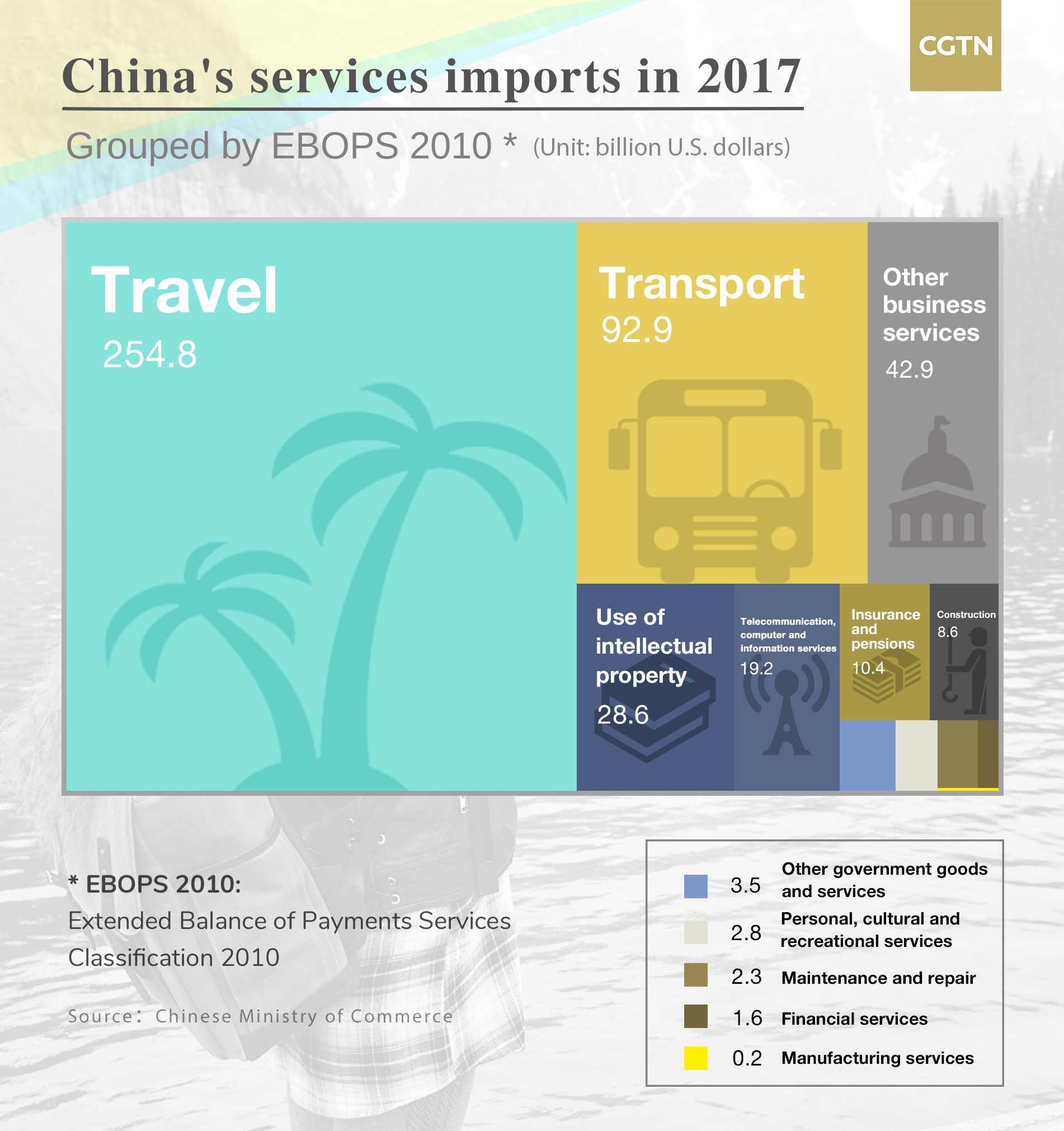
Travel
16:32, 16-Dec-2018
China's 40 Years: Inbound and outbound tourism
Updated
16:08, 19-Dec-2018
By She Jingwei

In recent years, China has witnessed unprecedented development in its tourism industry thanks to the implementation of the reform and opening-up policy.
Inbound tourism is a basic indicator for measuring the comprehensive strength of a country's tourism industry and the level of international competition.
Looking back over the 40-year progress, China's inbound tourism has played a significant role in promoting the national tourism system and establishing the international image. Its outbound tourism has also contributed greatly to the world's economy and well-being.
CGTN will show you how China's inbound and outbound tourism has changed over the past 40 years.
Changes to China's inbound and outbound tourism
Since China carried out the reform and opening-up policy in 1978, the number of inbound tourists has increased dramatically. According to data from the China Tourism Academy (CTA), a think tank under the Ministry of Culture and Tourism, and China's National Bureau of Statistics (NBS), the number of inbound tourists reached 139.48 million in 2017, compared with an estimated 1.8 million tourists entering the Chinese mainland in 1978, though there are some drops in the number of tourists during some years.
Still, foreign visitors to the Chinese mainland reached 29.1 million in 2017, up 3.6 percent on the previous year, bringing in 69.5 billion U.S. dollars of revenue, up 4.1 percent on the previous year, according to CTA's reports.
In particular, the CTA noted that in 2017, an increasing number of inbound tourists were from the Belt and Road countries, meaning that China's Belt and Road Initiative has a great impact on the aforementioned countries.

With regards to the number of China's outbound tourists, as shown in the infographic above, the number of outbound tourists has continued to grow steadily since 1992 and is expected to increase in the coming years as it can be forecast from the infographic.
In addition, the reports released by the CTA show that outbound tourists spent 115.29 billion U.S. dollars on their trips in 2017 and China's outbound tourism market is estimated to increase by five percent annually on average in the coming years, evidencing that China's outbound tourism has made great contribution to the tourism and economy industries around the globe.
Top six 'visitors' to China over the decades
According to the data from the NBS, tourists from Myanmar, Vietnam, Japan, S. Korea, the United States and Russia account for the top six foreign visitors to China from 1990 to 2017. For overseas tourists, Hong Kong, Shanghai, Beijing, Macao and Guangzhou are the top five China travel destinations, Travel China Guide reported.
Future of China's tourism industry

In terms of China's service imports last year, tourism was the largest sector with a value of 254.8 billion U.S. dollars, according to the data from Chinese Ministry of Commerce, which means tourism would become one of China's primary and fastest-growing economic sectors in the future.
Meanwhile, a report released by the market research group Euromonitor International also mentioned that China is forecast to overtake France as the world's most visited country by 2030 as a growing middle class in Asia looks to spend more on travel. In addition, China is forecast to surpass the U.S. and Germany to become the largest source of outbound departures by 2030.
As for the future of inbound and outbound tourism in China, many tourism-friendly policies and initiatives including visa facilitation and more international air routes have been made to expand the tourism market. At present, the 72-hour visa-free transit policy has been adopted in some Chinese cities, which can be noted as a good way to welcome more foreign visitors.

SITEMAP
Copyright © 2018 CGTN. Beijing ICP prepared NO.16065310-3
Copyright © 2018 CGTN. Beijing ICP prepared NO.16065310-3